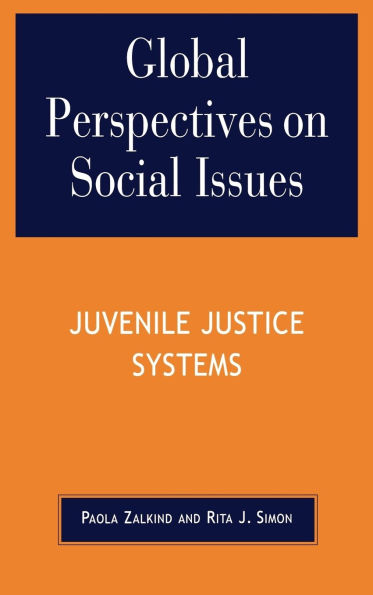Global Perspectives on Social Issues: Juvenile Justice Systems
"On November 20, 1959, the United Nations adopted the Declaration of the Rights of the Child. The Charter was meant to safeguard the rights of children all over the world, and protect the most vulnerable members of society from mistreatment at the hands of their parents, the government, the military, educational institutions, and any establishment capable of exerting power over children." Authors Rita J. Simon and Paola Zalkind begin Global Perspectives on Social Issues: Juvenile Justice Systems with this declaration and the sense that its realization, sadly, has yet to happen. According to their study much of the world, including the most modern industrialized nations, fail to live up to the declaration's tenets. Juvenile Justice Systems is a comparative study of how these systems actually operate in the world. It establishes both the stated and legal rights of children, in many parts of the world, in the face of criminal proceedings as well as the actual experiences of children in different justice systems. This study is explicitly comparative, placing such issues in comparison as the age of criminal responsibility, the Court system for juvenile offenders, the rights of juveniles in conflict with the law and any differentiation from adult rights, and last the conditions and goals of punishment. This book explores a wide variety of approaches to the investigation of juvenile justice systems across the world. It is a valuable reference tool for sociologists, legal scholars, criminologists, policy makers, governmental and non-governmental organizations, educators, and many other professionals invested in the well being of children across the globe.
1147611388
Global Perspectives on Social Issues: Juvenile Justice Systems
"On November 20, 1959, the United Nations adopted the Declaration of the Rights of the Child. The Charter was meant to safeguard the rights of children all over the world, and protect the most vulnerable members of society from mistreatment at the hands of their parents, the government, the military, educational institutions, and any establishment capable of exerting power over children." Authors Rita J. Simon and Paola Zalkind begin Global Perspectives on Social Issues: Juvenile Justice Systems with this declaration and the sense that its realization, sadly, has yet to happen. According to their study much of the world, including the most modern industrialized nations, fail to live up to the declaration's tenets. Juvenile Justice Systems is a comparative study of how these systems actually operate in the world. It establishes both the stated and legal rights of children, in many parts of the world, in the face of criminal proceedings as well as the actual experiences of children in different justice systems. This study is explicitly comparative, placing such issues in comparison as the age of criminal responsibility, the Court system for juvenile offenders, the rights of juveniles in conflict with the law and any differentiation from adult rights, and last the conditions and goals of punishment. This book explores a wide variety of approaches to the investigation of juvenile justice systems across the world. It is a valuable reference tool for sociologists, legal scholars, criminologists, policy makers, governmental and non-governmental organizations, educators, and many other professionals invested in the well being of children across the globe.
114.0
In Stock
5
1

Global Perspectives on Social Issues: Juvenile Justice Systems
208
Global Perspectives on Social Issues: Juvenile Justice Systems
208Hardcover(New Edition)
$114.00
114.0
In Stock

Product Details
| ISBN-13: | 9780739107300 |
|---|---|
| Publisher: | Bloomsbury Academic |
| Publication date: | 06/03/2004 |
| Edition description: | New Edition |
| Pages: | 208 |
| Product dimensions: | 6.00(w) x 9.00(h) x 0.62(d) |
About the Author
From the B&N Reads Blog
